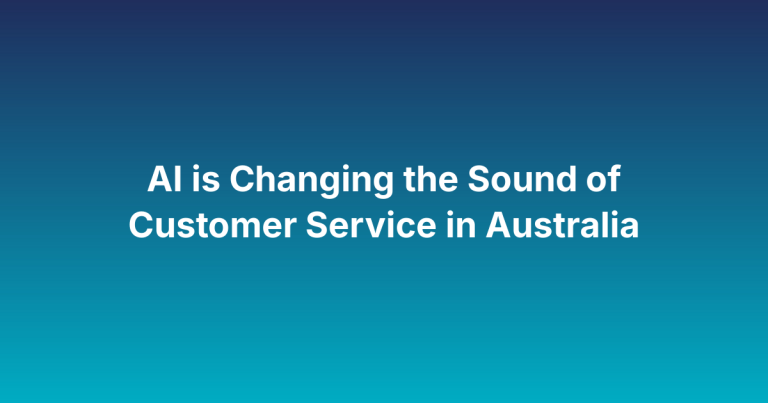The Rise of AI in the Contact Centre Landscape
Artificial intelligence is reshaping the contact centre industry, driving a noticeable shift in how businesses and customers interact across Australia. As technology matures, companies increasingly turn to sophisticated AI solutions, aiming to enhance both efficiency and the overall customer experience. This shift is not simply about faster response times, but also about raising expectations for service quality. Organisations are finding that AI can manage repetitive queries, analyse volumes of data instantly and improve the flow of communication between staff and clients.
The impact goes deeper than operational speed. By integrating AI tools in Australian contact centres, businesses can now respond to customers with more context and personalisation. This technology makes it possible to anticipate needs, solve issues before they become complaints and provide smoother interactions. As Australian firms look for a competitive advantage in a crowded marketplace, AI is becoming a critical asset for customer retention and satisfaction.
Changing the Sound of Service: Accent Normalisation in Focus
If you have called a customer service line recently, you might have noticed a subtle yet powerful difference in your experience. At the heart of this new clarity sits Sanas, an AI-powered accent normalisation tool now being implemented in Asia-Pacific operations with a particular focus on Australian customers. The change may not even register with callers but the reduction in strong accents and background noise streamlines conversations and minimises misunderstandings.
Teleperformance, known globally for business process outsourcing, has invested heavily, at least US$13 million into this AI system. The company is not simply testing new waters. With exclusive regional reseller rights, Teleperformance plans a robust rollout in Australia, aiming to raise the service standard within local contact centres.
The Technology Behind the Shift
Sanas operates in real time, modifying the spoken accent of agents on calls, making voices sound more neutral. For the customer on the other end, this usually means fewer requests to repeat themselves and much less confusion. For agents, this can relieve stress and build confidence, especially when handling difficult or impatient callers. Teleperformance executives have openly shared that their focus is on enhancing—not replacing—the real human touch within customer interactions.
Why Accent Matters in Australian Customer Service
Australia’s community is known for its diversity, and its customer service sector reflects this landscape. Contact centre agents often come from many linguistic backgrounds, a strength that can sometimes become a barrier when accents make communication harder for customers. In a business where a few misunderstood words can lengthen calls or damage satisfaction, clarity has become a premium asset.
Accent normalisation through AI technology resolves a longstanding problem. Customers no longer struggle to understand agents, and agents feel more at ease when helping local clients. This leads to longer-lasting relationships and helps contact centre operators uphold their reputations for high-quality service. As calls become less stressful for everyone involved, both customer and employee satisfaction can rise.
Teleperformance and AI-Powered Communication Tools
Teleperformance has carved out a reputation for leading in contact centre technology adoption. Its commitment to AI-driven accent normalisation is not just about upgrading technology, but about making a real difference in people’s lives. By introducing AI tools in their Asia-Pacific centres, Teleperformance hopes to address common frustrations that Australian callers often express during offshore service experiences.
The decision to build a near-shore hub in Indonesia marks another strategic move. By recruiting Australian expatriates to serve on this team, Teleperformance aims to further bridge cultural and linguistic gaps. This approach not only boosts familiarity for Australian customers, but also widens local job opportunities for those with significant ties to the country. The cumulative effect is intended to make every call smoother, friendlier and more responsive.
Boosting Efficiency and Reducing Costs
AI adoption also means contact centres can realise efficiency gains. By standardising speech and eliminating unnecessary repetition, call times decrease and resolutions arrive more promptly. This efficiency is not just a matter of convenience—it translates to direct cost savings for companies. Fewer errors, reduced training requirements for agents and a streamlined workflow all contribute to the bottom line.
AI and the Changing Role of Contact Centre Agents
One common misconception about AI in customer service is that it will replace human roles outright. In reality, AI is currently supporting agents, empowering them to deliver superior results. With the technology handling accent modification and background noise removal, agents can concentrate on empathy and problem-solving, aspects that machines still cannot master.
This shift means that contact centre staff need to learn new skill sets. Adaptable communication, emotional intelligence and tech-savviness are now as important as classic service protocols. Companies are investing in agent upskilling programmes to keep pace, ensuring employees can work effectively with their digital colleagues and realise the full benefits AI offers.
Training and Development in an AI-Enhanced Workplace
Contact centre operators across Australia have started tailoring training modules specifically to AI-powered workflows. Employees learn how to interpret the tools’ analytical feedback and use performance dashboards to improve their own work. Continuous professional learning ensures agents remain valuable while the workplace—and technology—continue to shift. The narrative isn’t about replacement, but about collaborative growth between people and machines.
Customer Experience in the Age of AI Technology
Modern customers expect seamless, rapid and accurate responses from service professionals. AI platforms bring promised improvements by recognising customer sentiment through voice analysis, flagging complex cases for escalation and maintaining consistency throughout every conversation. The reduction in misunderstandings and repeated clarifications is already reshaping expectations across Australian households and businesses.
By integrating advanced AI tools like accent normalisation, contact centres offer a more comfortable experience for everyone. Customers appreciate the effortlessness of clear, concise exchanges. The technology also allows for smarter routing, ensuring that particularly challenging queries always reach the most appropriate agents. This personal approach builds goodwill and encourages loyalty.
Industry Insights: Balancing Innovation and Human Touch
Every business exploring contact centre upgrades faces a common dilemma: How to implement cutting-edge innovation without losing the essential human connection customers value. Industry leaders suggest that AI should act as an enhancement, not a replacement. The real challenge is to balance efficiency with empathy and innovation with trust—qualities that define great service.
In Australia, where expectations for personal service remain high, successful companies blend the best of both worlds. They use AI to eliminate common pain points but continue to invest in human-led customer engagement strategies. This balance ensures that advances never become barriers or sources of alienation.
The Future of Australian Contact Centres: Cultural and Linguistic Advancements
The development of AI-powered accent normalisation marks just one milestone on a larger journey. Looking ahead, experts predict the contact centre sector will continue investing in technology to refine regional dialect recognition and offer hyper-personalised responses for a diverse Australian audience. These advancements will help companies better match agents and customers based on language preferences, time zones and even cultural cues.
Teleperformance’s strategy in Indonesia points to a future where near-shore hubs support both cultural relevance and efficient delivery. By blending advanced technology and authentic linguistic roots, businesses aim to meet the complex needs of Australian clients while making operations more scalable and resilient.
Driving Industry Standards Forward
Other companies in this field are now racing to keep pace with AI-enhanced communication options. Investment in similar tools is expected to rise, with more contact centres interested in standardising speech for clarity. These changes will prompt updates across recruitment, training and agent management, setting new industry standards for quality and accessibility.
Ethics, Privacy and Customer Trust in the AI Era
AI-driven accent normalisation and similar technologies raise important questions about user consent, privacy and transparency. Customers want to know when technology is shaping their experiences and how data is being processed. Companies must clearly communicate what AI is and is not doing, ensuring compliance with local regulation and building customer trust.
Contact centre leaders have started publishing guidelines on ethical AI usage, promising clear opt-in mechanisms for callers and employees alike. As these solutions become more widespread, transparency will only gain in importance. Maintaining open dialogue about data usage reassures customers that technology serves their interests and respects their privacy.
Building a Culture of Accountability
A strong culture of accountability will be necessary as AI advances. This includes regular reviews of AI outputs, transparency in reporting and updates to internal governance. Such commitments play an essential role in maintaining the trust that underpins every successful customer interaction. Balancing innovation with responsible stewardship should remain top of mind for those leading the charge in AI integration.
Predictions for the Next Generation of AI Customer Service
Looking to the years ahead, analysts project that AI technology will play a central role in shaping the next wave of contact centre advancements. The focus will likely shift from fundamental communication enhancements to predictive support, automated coaching for agents and personalised escalation routes for complex service calls. These features will allow companies to handle growing demand without sacrificing service levels.
AI’s reach might expand beyond voice interactions, influencing email, chat and social media support. This will create a truly omnichannel service experience for Australian customers. For contact centre leaders, this is the time to invest in agile strategies and robust evaluation processes. Collaboration between industry stakeholders and technology experts will ensure that progress benefits both customers and staff.
Talent Development and Future Skills
To keep pace with these changes, the demand for adaptable employees will rise. Australian contact centre teams will require ongoing education not only in digital fluency, but also in building connections and solving problems under pressure. Progressive organisations will use AI to support upskilling, providing personalised training modules and instant feedback to agents. These investments help ensure the workforce remains ready for the next phase of customer service innovation.










Comments are closed.